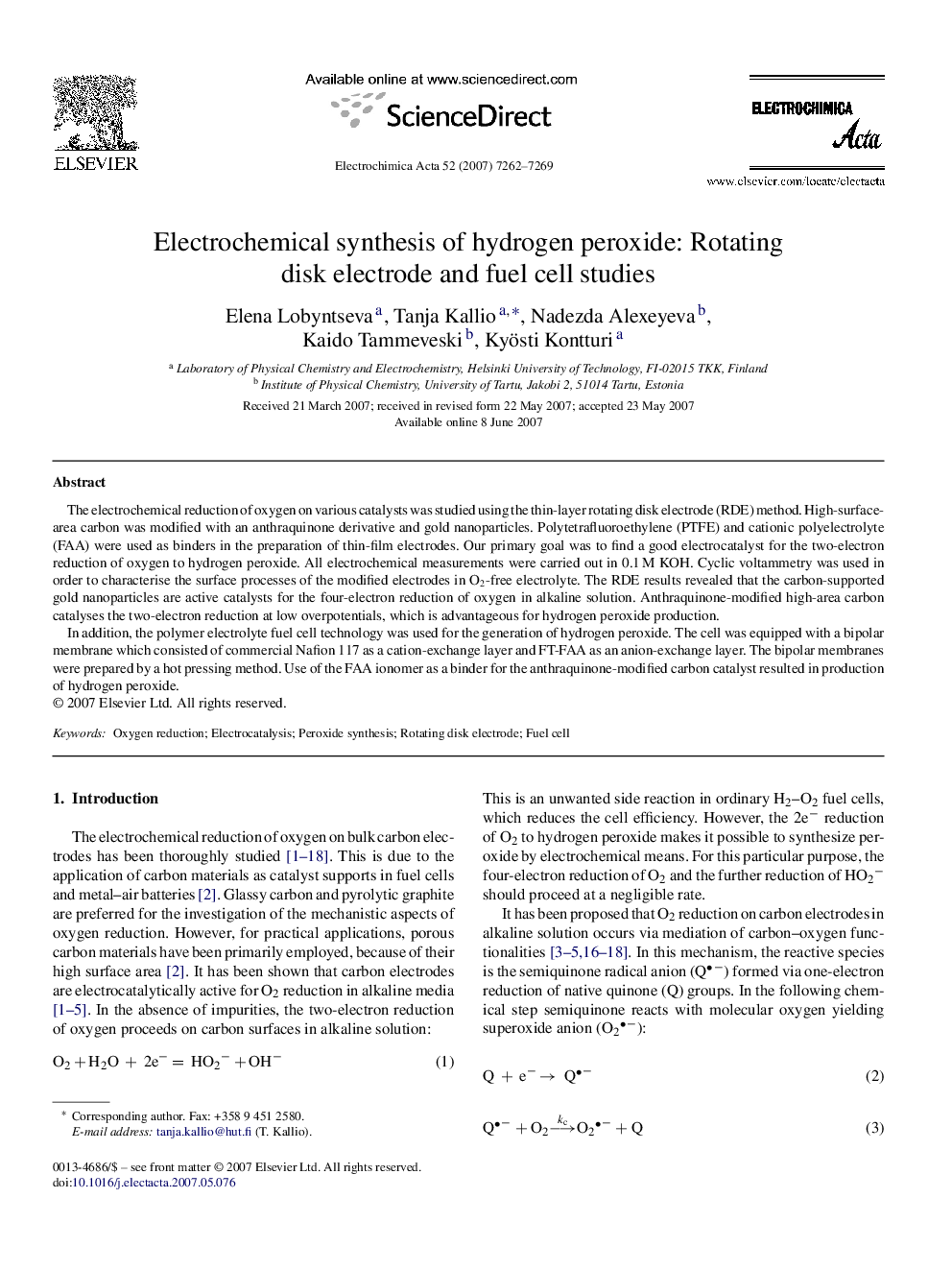| Article ID | Journal | Published Year | Pages | File Type |
|---|---|---|---|---|
| 193960 | Electrochimica Acta | 2007 | 8 Pages |
The electrochemical reduction of oxygen on various catalysts was studied using the thin-layer rotating disk electrode (RDE) method. High-surface-area carbon was modified with an anthraquinone derivative and gold nanoparticles. Polytetrafluoroethylene (PTFE) and cationic polyelectrolyte (FAA) were used as binders in the preparation of thin-film electrodes. Our primary goal was to find a good electrocatalyst for the two-electron reduction of oxygen to hydrogen peroxide. All electrochemical measurements were carried out in 0.1 M KOH. Cyclic voltammetry was used in order to characterise the surface processes of the modified electrodes in O2-free electrolyte. The RDE results revealed that the carbon-supported gold nanoparticles are active catalysts for the four-electron reduction of oxygen in alkaline solution. Anthraquinone-modified high-area carbon catalyses the two-electron reduction at low overpotentials, which is advantageous for hydrogen peroxide production.In addition, the polymer electrolyte fuel cell technology was used for the generation of hydrogen peroxide. The cell was equipped with a bipolar membrane which consisted of commercial Nafion 117 as a cation-exchange layer and FT-FAA as an anion-exchange layer. The bipolar membranes were prepared by a hot pressing method. Use of the FAA ionomer as a binder for the anthraquinone-modified carbon catalyst resulted in production of hydrogen peroxide.
